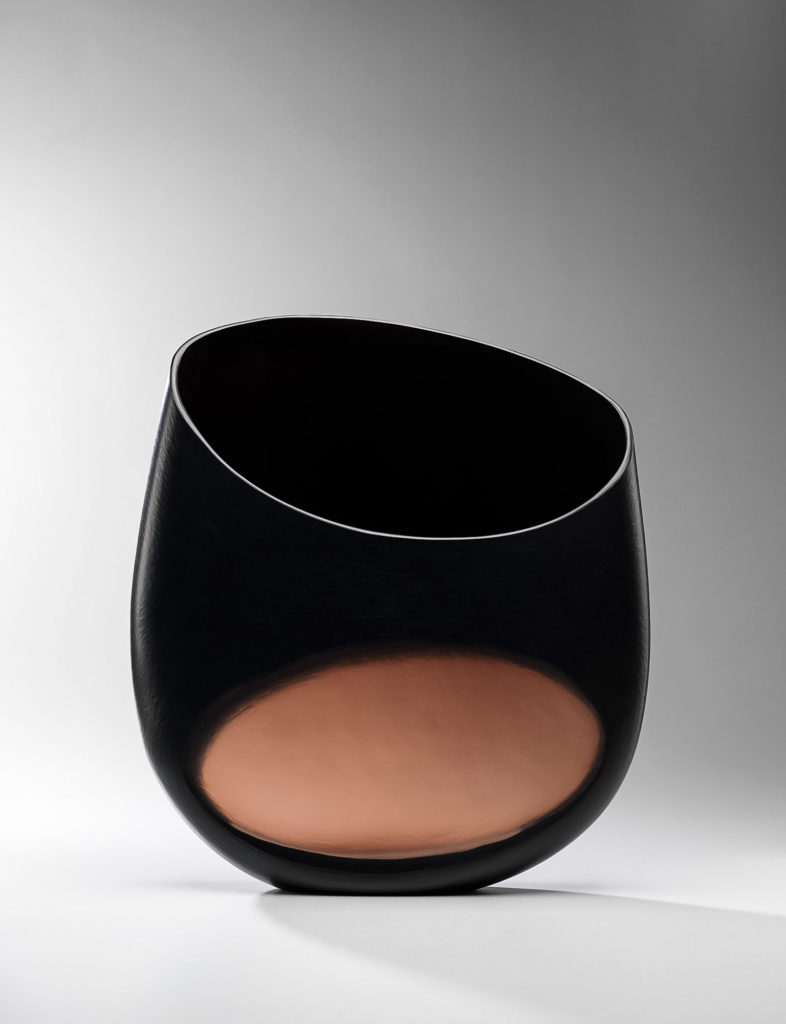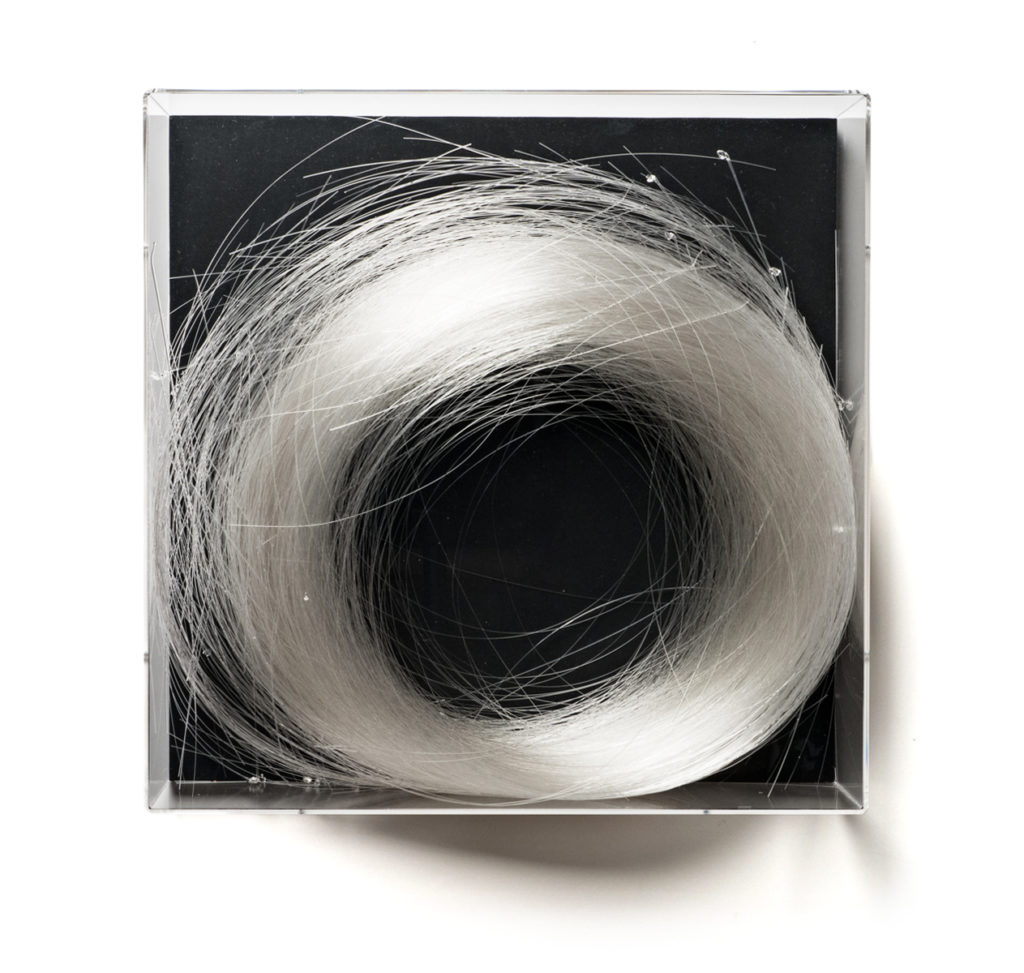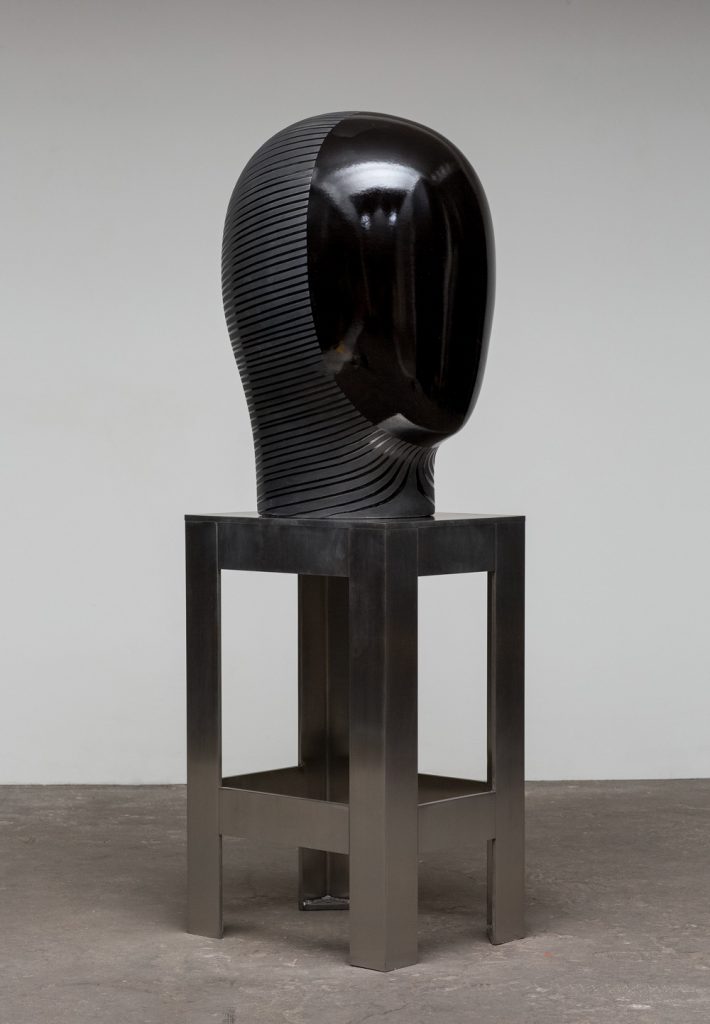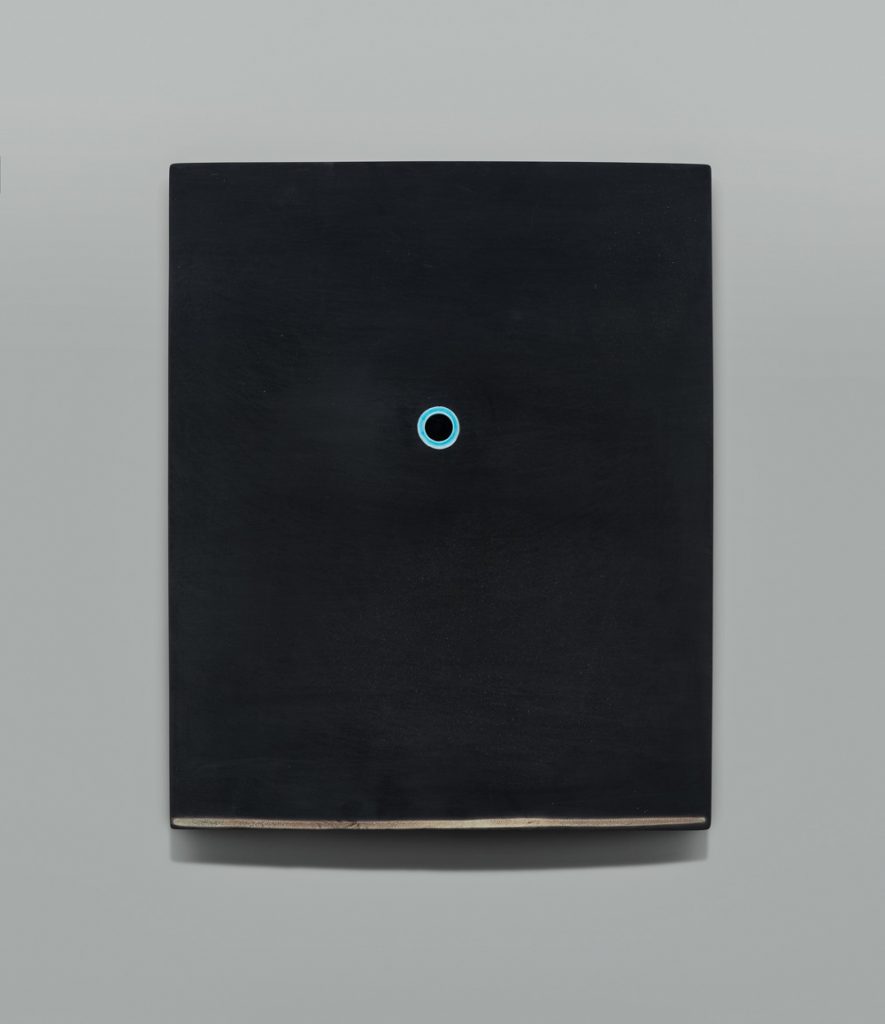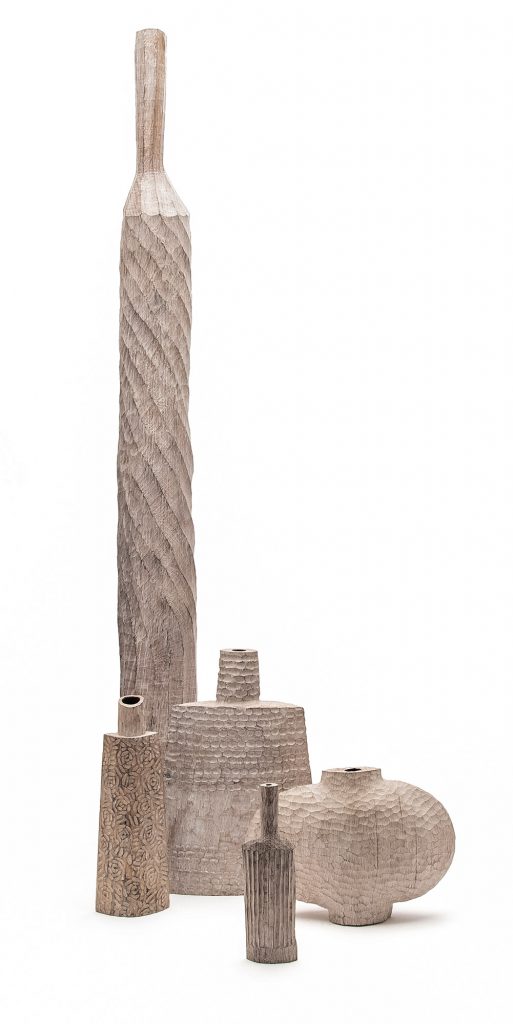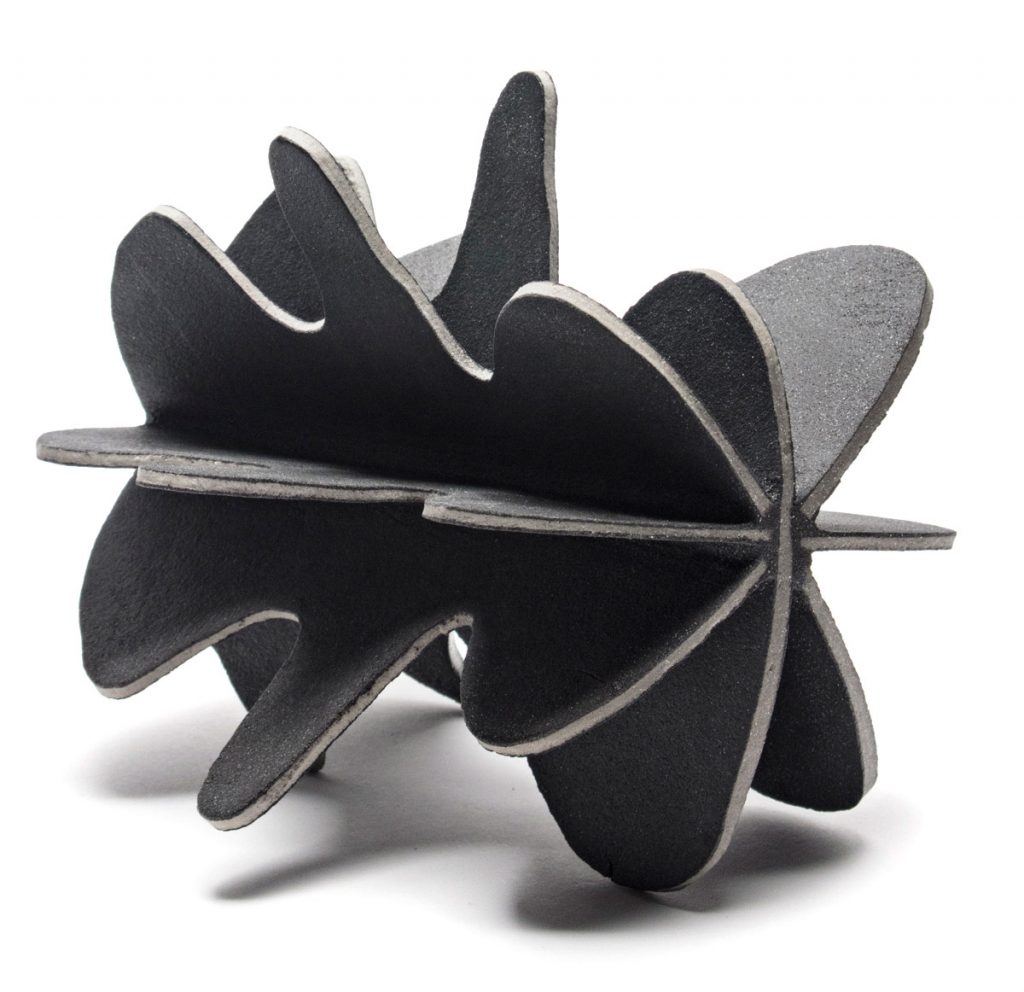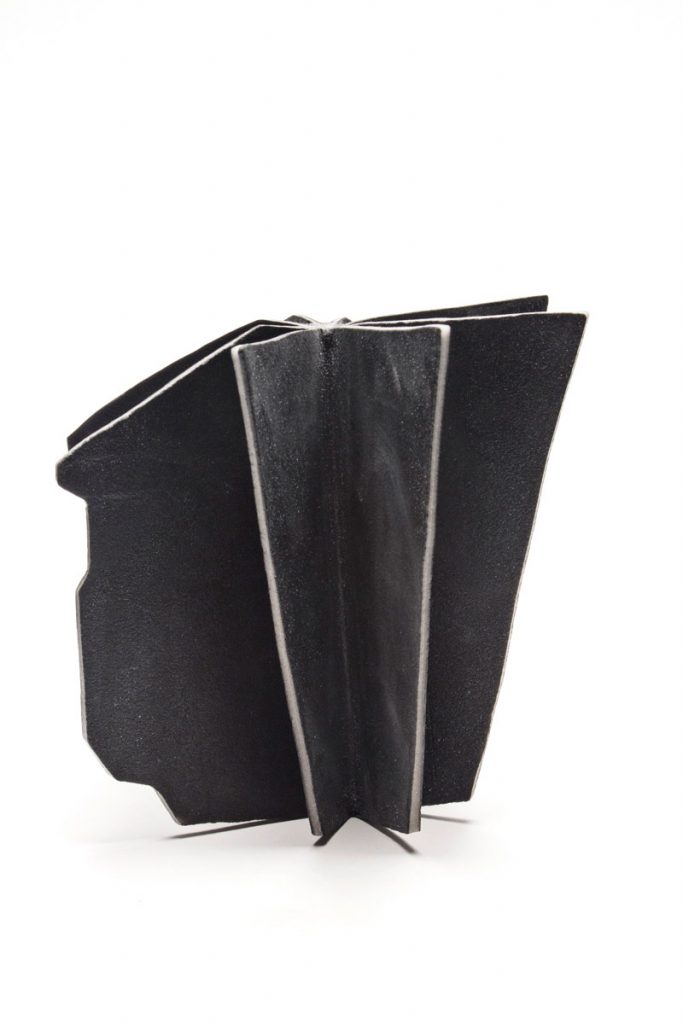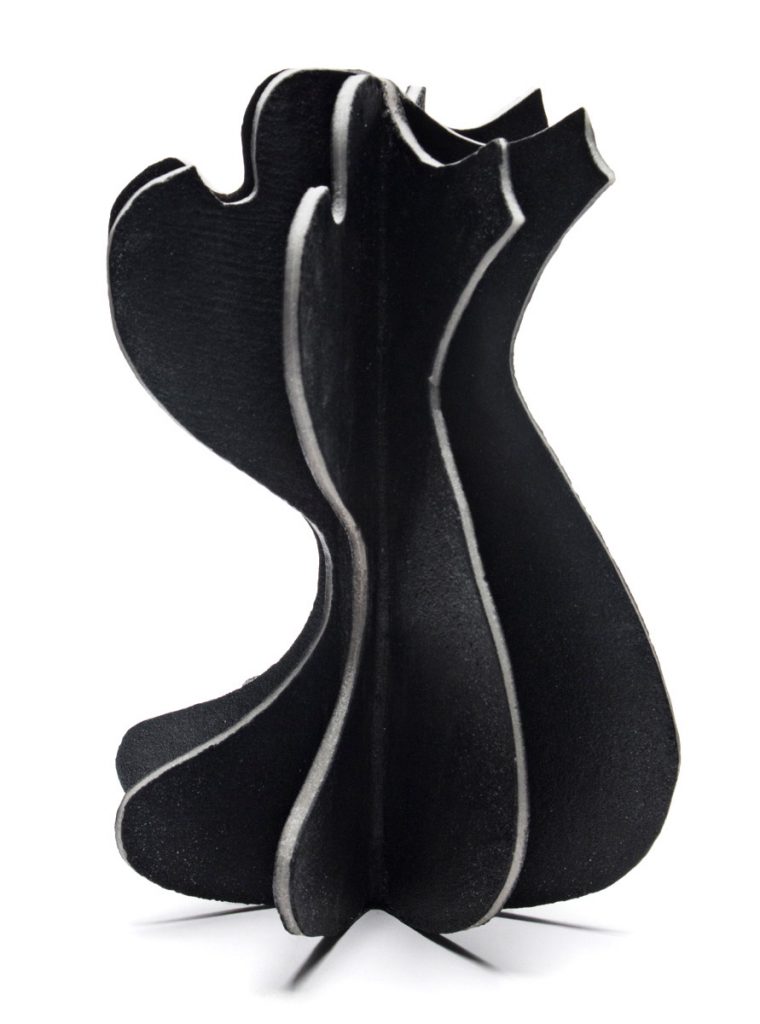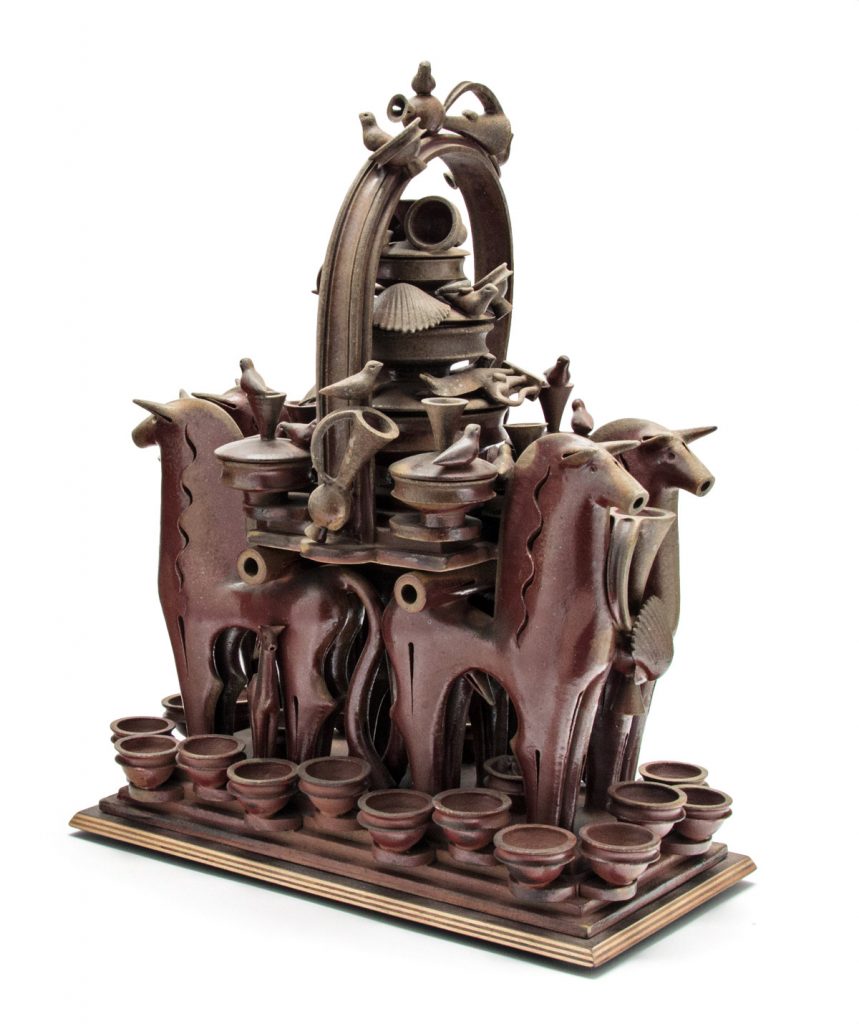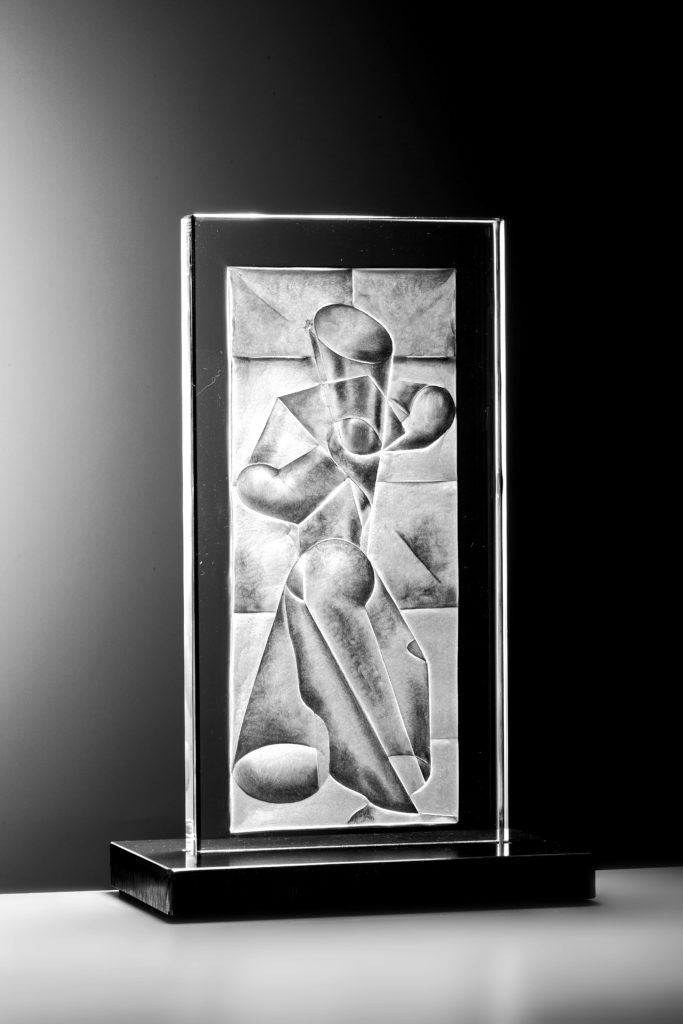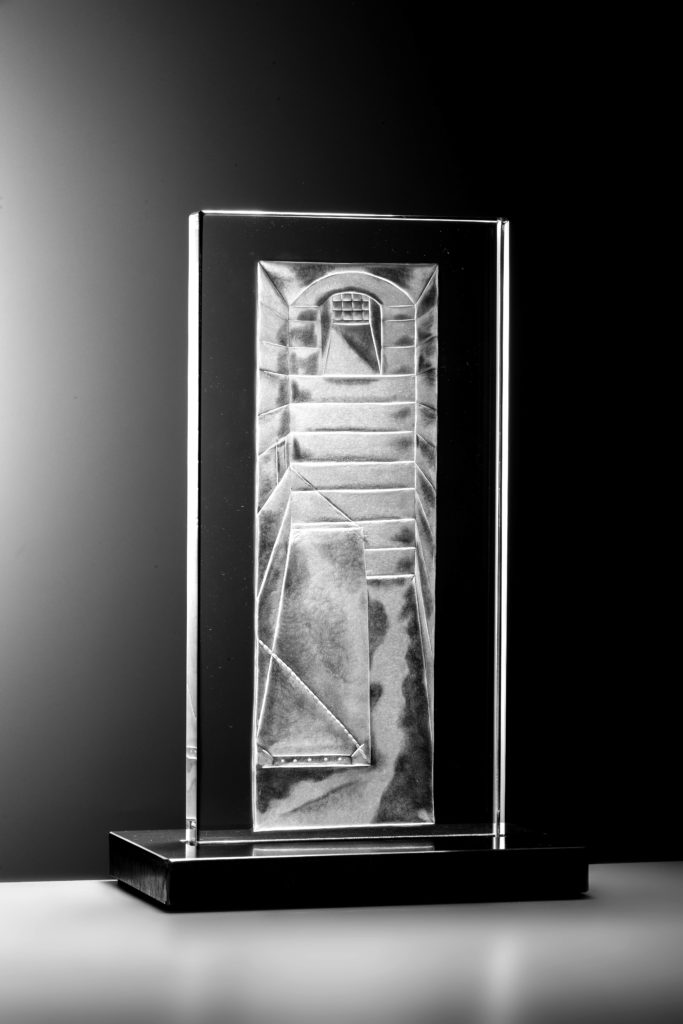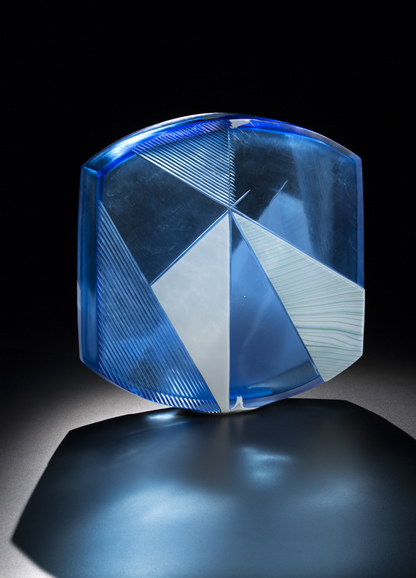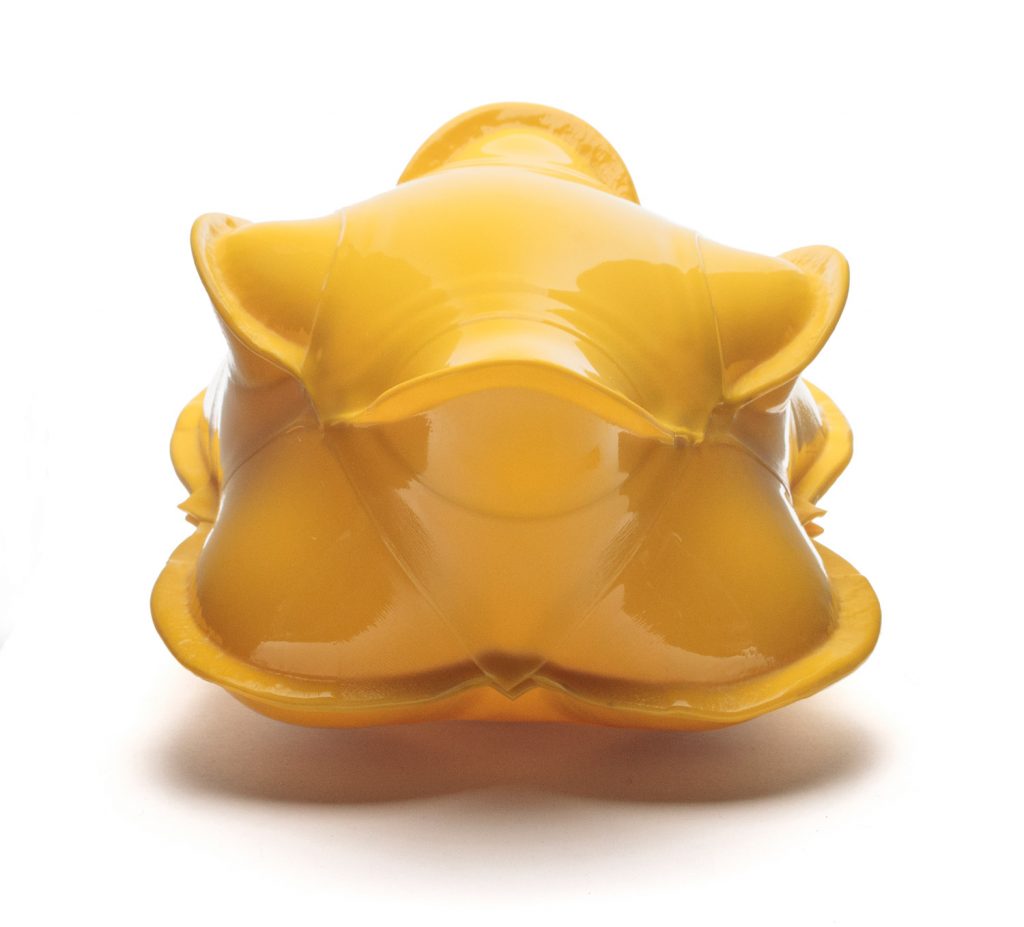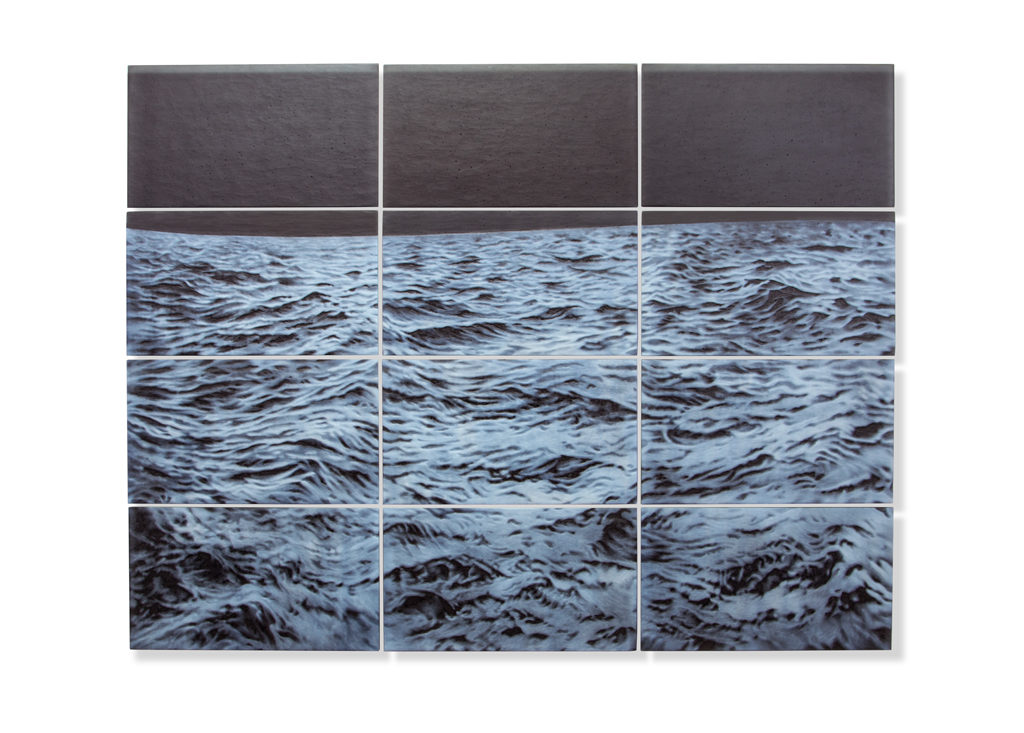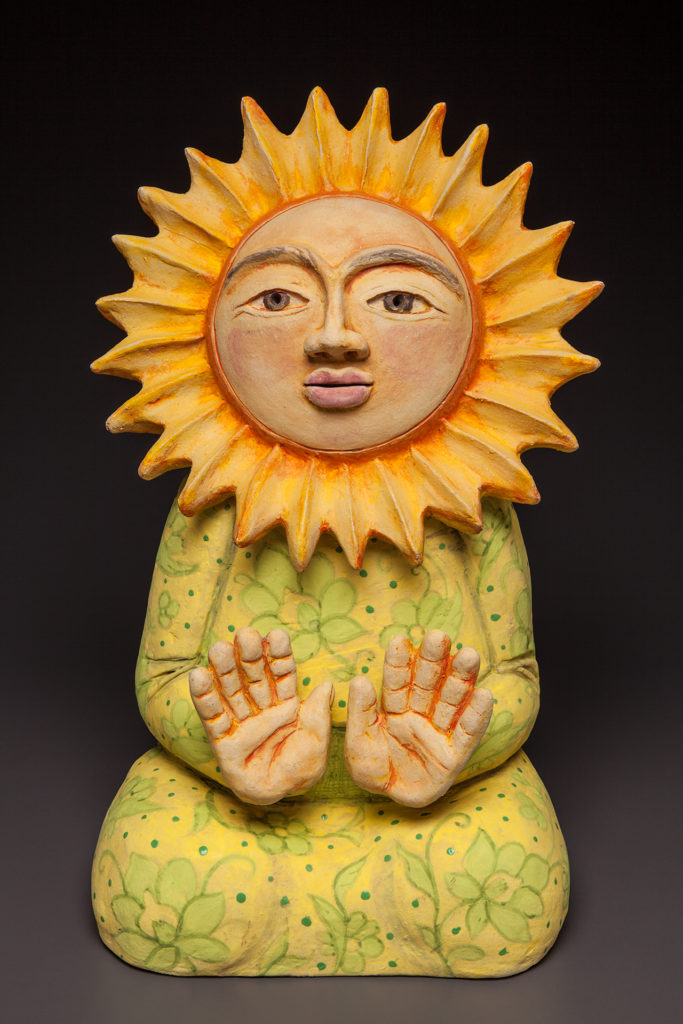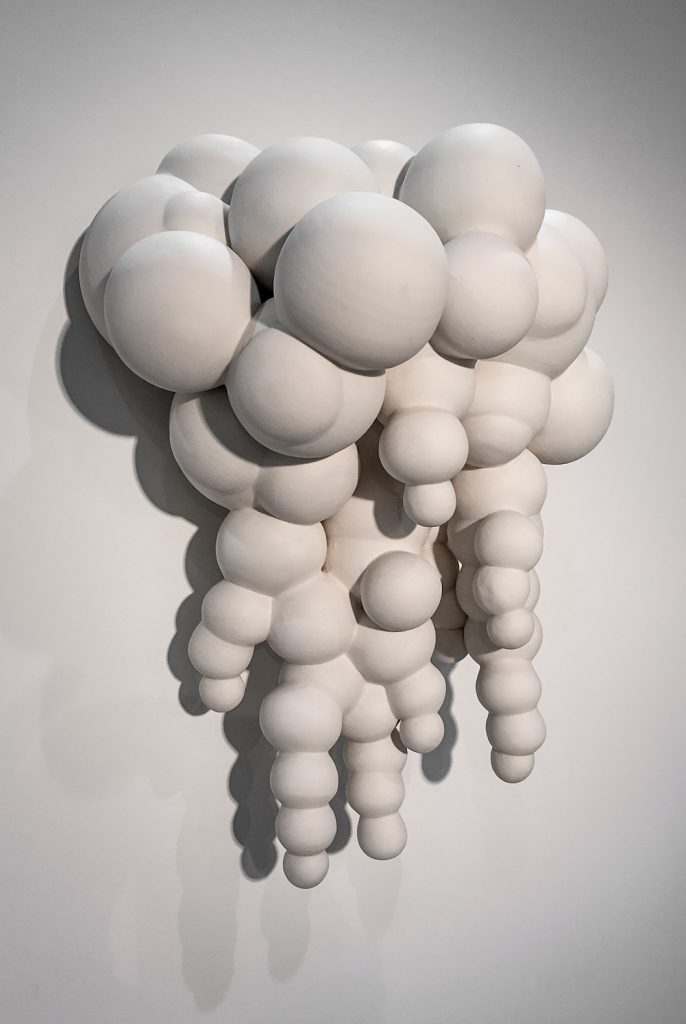Meditation/Mediation
Gallery Artist Group Show
Traver Gallery is pleased to present Meditation/Mediation, a gallery artist group exhibition.
This show, featuring the work of 27 artists, brings together a diverse group of sculptures and paintings that highlight different approaches to medium and artistic process. The title of the show, Meditation/Mediation refers to the artists’ conceptual practice and material manipulation, and it refers to the experience of the viewer, as they observe, think about, and are shaped by their interaction with the artworks. This show seeks to prompt the viewer to consider how these artworks came into being, the person who created them and why, and how the physical and conceptual space that they occupy is uniquely potent.
Exhibition includes works by: Mark Bennion, Heike Brachlow, Squire Broel, Mel Douglas, Tom DeGroot, Tim Edwards, Justin Ginsberg, Jef Gunn, Jun Kaneko, Tori Karpenko, John Kiley, Malcolm Martin & Gaynor Dowling, Anna Mlasowsky, Eric Nelsen, Jane Rosen, David Ruth, Cordy Ryman, Preston Singletary, Ethan Stern, April Surgent, Matthew Szosz, Cappy Thompson, Jamie Walker, Lynn Whitford, Ann Wolff, Hiroshi Yamano, Jiro Yonezawa.
-
About
Mark Bennion - view profile
Seattle born Bennion is a painter and sculptor who has shown his work across the United States, Canada, and Europe since 1968. He lives and works on Vashon Island, near Seattle, Washington. Following in the tradition of Northwest artists such as Mark Tobey, Paul Horiuchi, Morris Graves and William Ivey, all of whom shared an affinity for painting on paper as well as a deep reverence for eastern art, Bennion sees his frescoes as a “confluence of eastern and western techniques and traditions.” Like the frescoes of Pompeii, Bennion’s paintings convey a sense of history and tradition. A practicing Buddhist for much of his adult life, Bennion is concerned more with the moment of inner peace and meditation, than with the specific story each painting or sculpture tells. His hopes are that the viewer finds great inspiration, or simply a moment of insight, in the work.
Strongly encouraged by mentor William Ivey (1919-1992), Bennion spent years developing his unique painting process, which he calls fresco — using oil paint, dry pigment on plaster and paper which is attached to a panel or canvas. This process lends itself to many of his interests; textures that recall ancient walls and decaying structures are overlaid with markings and shapes of the mythology from many cultures, creating a surface that is both familiar and unknown. The work on plaster is painted and sanded, and painted over and over, sometimes 4 or 5 layers but often up to 10 or 12 until the work is complete.
Bennion is also a sculptor; crafting mostly large scale geometric welded steel pieces and numerous outdoor installations. His painting and sculptures share a meditative and often poetic quality, a quality that beautifully reflects Bennion’s own philosophy and approach to making art.
-
Heike Brachlow
- view profile
Born and raised in Munich, Germany, Heike Brachlow received her BA in glass 2004 from the University of Wolverhampton, her MA in 2006 and PhD in 2012 from the Royal College of Art in London. She works as a self-employed artist from her studio in Cumbria, and as an educator and lecturer, teaching at the Royal College of Art in London. Her work is represented in many museum collections including the V&A (UK), the European Museum of Modern Glass (Germany), the National Museums Scotland, and the Tacoma Museum of Glass (USA). She has won the Jerwood Maker’s Open Award in 2011 and the Glass Seller’s Arts and Crafts Award at the British Glass Biennale in 2017, and her work has been exhibited in many countries including the USA, China, Japan, Korea, Australia, Italy, and Germany.
-
Squire Broel
- view profile
Squire Broel uses visual language to give shape to his encounters with both the visible world and the invisible world. Nuances, commonly overlooked in the midst of a frenetic, culturally driven reality provide much of the inspiration for his work. Through series and repetition Broel delves deep into his creative process; ever-working to distill the spirit of his subjects. Through his quest for the “essential,” Broel explores the many expansive possibilities inherent to the search.
Upon receiving his B.A. from Seattle Pacific University in 1992, Broel spent the next six years gaining insight and experience through travels around Southeast Asia and as the patineur for the Walla Walla Foundry. He used this time to cultivate his own manner of working and hone his skills as an artist. As the bronze coloration specialist at the Foundry, Broel consulted and worked for such artists as Jim Dine, Deborah Butterfield, David Bates, the late Nancy Graves and the late Robert Arneson. At the same time, he became increasingly influenced by and aware of the traditions and methods that thread Northwest artists together. Recurrent references to natural forms, energetic mark making and the mystical surface quality in his work connect Broel to those traditions.
Near the end of 1997, Broel left the Walla Walla Foundry to open Broel Studio. This move has allowed him to focus on his own work full time. Employing his education, knowledge of art history and experience as patineur, Broel is painting and sculpting to visually express everyday objects and experiences with thoughtful honesty and reflection. Broel’s current work continues in a variety of dimensions to explore the derivations of his abstract botanical paintings. Moving between works of large-scale and diminutive stature celebrates the inherent physicality of the creative process itself, and how changes in process build and affect meaning.
His work is in numerous private and public collections: examples include the Brooklyn Museum, Los Angeles County Museum, Swedish Hospital (Seattle, WA), Whitman College (Walla Walla, WA) and the City of Walla Walla. Broel has participated in solo and group exhibitions throughout the Pacific Northwest, Canada, Vietnam, China and Indonesia. While his work is exhibited internationally, Broel has chosen to live and work in Walla Walla, Washington. The isolation of his location allows him to develop his own visual voice that continues to gain attention outside the Northwest.
-
Mel Douglas
- view profile
Mel Douglas is one of the most celebrated artists working in glass today. Douglas’s refined and detailed work employs a minimalist aesthetic along with considered mark-making to engage a dialogue of how line and form can define and defy our understanding of space and volume. Douglas’ work explores the potential, versatility, and flexibility of glass as a material for drawing, and with it, expands our view of glass as a sculptural medium.
In Douglas’s words, “objects and drawings are often thought of as two separate entities. my pieces explore and interweave the creative possibilities of this liminal space, where the form is not just a support for drawing; but a three-dimensional drawing itself. Using the unique qualities of the material and the rich potential of mark-making on and with glass, I am using line as a way to inform, define and enable dimensional space”.
Mel Douglas has worked as an independent studio artist since graduating from the Canberra School of Art, Australian National University, in 2000. In 2020 Douglas was awarded a Ph.d. for her practice-lead research investigating how we can understand studio glass through the aesthetics of drawing. In addition to winning the 2020 and 2014 tom Malone Prize- a prestigious award through which a work is acquired each year into the collection of the National Gallery of Western Australia – Douglas has received several major awards, including the Ranamok Glass Prize in 2002 and the International Young Glass Award in 2007 from the Ebeltoft Museum of Glass.
In 2019 her work was the inaugural acquisition for the Australian National Gallery of Art’s Robert and Eugenie Bell Decorative Arts and Design fund. Douglas’ work is held in the private collections and public institutions internationally, including the Corning Museum of Glass, The Chrysler Museum of Art, the Ebeltoft Museum of Glass, and the National Gallery of Australia.
-
Tom DeGroot
- view profile
Tom DeGroot’s paintings prove that humble, utilitarian materials such as wire mesh or corrugated cardboard can transcend themselves to create a bounty of luxurious, meditative patterns and possibilities.
Tom Degroot present “An Edge in the Ocean” a new series of acrylic paintings on Sintra, a plastic based industrial construction material. The works are formed spontaneously by pulling the wet acrylic paint across the smooth plastic surface of the Sintra – the resulting composition has an immediacy and openness about it; it is both direct and strong. DeGroot, a long-time Zen Buddhist, draws a connection between this his newly developed process and that of Sho Do, the art of Zen Calligraphy. In both cases, the painter or the calligrapher, and the brush, ink and paper are engaged in one inseparable activity, and what is left is a record of that harmonious and unconditioned moment.
Mounted on wood panels and then covered in layers of paint, DeGroot’s mesh and cardboard form a structure onto which tinted resin is poured. The paintings take shape as the resin levels and falls into the grooves of the cardboard, creating a luminous sense of depth and richness. Wide, silky smooth surface areas, punctuated periodically by the rippling peaks of the board or the recessed pools of the mesh, create hauntingly beautiful rhythms that move throughout the work.
-
Tim Edwards
- view profile
Tim came to glass from a ceramic background, from which he developed a bold sense of design and surface manipulation. This can be seen in the works for which he has gained an international reputation. Tim’s work is blown or shaped in the hotshop and then cut, carved and ground using the lathe with diamond and stone wheels.
He has a strong connection to JamFactory, the premier Craft and Design facility located in Adelaide, South Australia. He first completed a traineeship in Ceramics in 1992 with Stephen Bowers and then went on to complete a traineeship in Glass with Nick Mount, both experiences have played a significant role in his development. Tim also worked as an artist at Blue Pony studio from 2001 to 2008.He now works as an artist and glass studio technician at JamFactory, and shares a home studio with partner, Clare Belfrage.
Tim has spent time in North America as a teacher and student at the Pilchuck Glass School, Haystack School of Crafts and at Ohio State University as a Scholar in Residence. In 2007 he undertook a residency at the Tacoma Museum of Glass as a visiting artist.
Exhibiting nationally and internationally, Tim has art work in major public collections, notably the Corning Museum of Glass, Corning, USA, Museum of Glass, Tacoma, USA, National Gallery of Australia, Art Gallery of South Australia, National Gallery of Victoria, Art Gallery of Western Australia and Wagga Wagga National Art Glass collection. In 2006 Tim was awarded the Rakow Commission from the Corning Museum of Glass, being the second Australian to receive this significant award.
In 2018 Tim was selected as one of 30 artists to participate in the prestigious Adelaide Biennial of Australian Art, “Divided Worlds” at the Art Gallery of South Australia.
-
Justin Ginsberg
- view profile
Justin Ginsberg was born and raised in Dallas Texas, before traveling the country learning from practicing artists. Since 2013, he has been the head of the glass area and assistant professor at the University of Texas at Arlington, while also pursuing his own creative practice and research. His work focuses on the systems and structures we use for understanding the world around us. He questions the known and orderliness, while also bringing context to the unknown and chaotic. He considers process and action as he explores the perceived boundaries of materials and the presumed nature of things.
Justin shows his work nationally and internationally, including a solo exhibition in Berlin Germany at Berlin Glas eV. In 2013. He has been included into New Glass Review five out of the last six years, and recently the Kunstpalast Museum in Dussledorf Germany acquired one of his works for their permanent collection. In 2015, he completed residencies at West TX A&M, The Corning Museum of Glass, The Tacoma Museum of Glass, and Wheaton Arts. He looks forward to a solo exhibition at the Traver Gallery, and teaching at the Toyama City Institute of Glass, later this year.
-
Jef Gunn
- view profile
I was born in Seattle in 1955. We moved around a lot: Honolulu, Lake Oswego, Vancouver, Seattle again, Pasadena. In 1975, my first real studio was a one car garage in Santa Cruz. Next, in 1980, a large bedroom in Berkeley. Both had stupendous views!
On a visit to Seattle when I was 14, my Aunt Helyn brought me to the Francine Seders Gallery, where I saw the works of Guy Anderson, Mark Tobey, Morris Graves and others. She also brought me to the studio of her older sister, Aunt Ruth. This day had an enormous impact on me. I never saw them again; they both died the following year. Once, years later, as I was leaving my Aunt Mary’s home, I pointed to one of Ruth’s paintings and said I think about this painting all the time. A large watercolor of rock and water, loose, abstract and yet real. “Well, you’d better take it then!” It’s still on my office wall.
I studied drawing and painting in California through the 1970s, held extended residencies in Barcelona and Paris in the 1980s, and since the mid 1990s have engaged in a passionate study of Asian art. I began using encaustic around 1983, having seen an encaustic painting by Joseph Goldberg. This was before there were any books or classes on it. I looked it up in Ralph Meyer’s Handbook of Artists’ Materials and Techniques and did the best I could with it. I made up my own methods, some of which failed. With encaustic, I can bring together all of my other methods: oils, papers and inks, fabric, tar, and gold. In any medium, my work draws on multiple lineages of art, culture and spiritual meaning. I finally got around to earning a BFA in 2005, and had a show that year at Traver Gallery, Tacoma.
My first show with the Traver Sutton Gallery was in 1990. From that show, the Quarter saw Gallery in Portland took an interest and I showed there until they closed in 2000. I became familiar with many in the Portland art community and moved there in 1998. In September 2006, I curated “Impulse,” a national show of encaustic painting and sculpture at the Portland Art Center. I’ve participated in group exhibits at the Art Gym (Marylhurst University) and Portland Institute for Contemporary Art and had a solo show at Oregon State University in 1995. I have taught painting and drawing in Seattle and Portland since the middle 1990s. In 2007, I led a group of artists on a tour of museums, galleries and artist studios in Barcelona. I was nominated for the 2013 Northwest Artist Awards. You can see my paintings at the Traver Gallery in Seattle, at i.e. gallery in Edison, WA., at Cedar Street Galleries in Honolulu, and at Augen Gallery in Portland, Oregon. And soon, at Gallery MAR in Carmel, California.
-
Jun Kaneko
- view profile
Jun Kaneko was born in Nagoya, Japan in 1942. He studied painting with Satoshi Ogawa during his adolescence – working in his studio during the day and attending high school in the evening. He came to the United States in 1963 to continue his studies at Chouinard Institute of Art when his introduction to Fred Marer drew him to sculptural ceramics. He proceeded to study with Peter Voulkos, Paul Soldner, and Jerry Rothman in California during the time now defined as The Contemporary Ceramics Movement in America. The following decade, Kaneko taught at some of the nation’s leading art schools, including Scripps College, Rhode Island School of Design and Cranbrook Academy of Art.
Based in Omaha since 1986, Jun Kaneko has worked at several experimental studios including European Ceramic Work Center in The Netherlands, Otsuka Omi Ceramic Company in Japan, Fabric Workshop in Philadelphia PA, Bullseye Glass in Portland OR, Acadia Summer Arts Program in Bar Harbor ME, and Aguacate in Puerto Vallarta, Mexico. Over the course of his career, he has partnered with industrial facilities to realize large-scale, hand-built sculptures. The first was his 1982-1983 Omaha Project at Omaha Brickworks. Later sculptures include his Fremont Project, completed in 1992-1994 in California, and most recently his Pittsburg Project completed in 2004-2007 in Kansas. Both of these later series of sculptures were created at Mission Clay Products. In April 2013, his exhibition Myths, Legends and Truths opened at Millennium Park in Chicago featuring thirteen nine-and-a-half foot tall Dangos and twenty-three of his Tanukis. This new body of work by Kaneko draws upon the myths and legends of the tanuki figure.
His artwork appears in numerous international and national solo and group exhibitions annually and is included in more than seventy museum collections. He has realized over thirty public art commissions in the United States and Japan and is the recipient of national, state and organization fellowships. Kaneko holds honorary doctorates from the University of Nebraska, the Massachusetts College of Art & Design and the Royal College of Art in London.
Kaneko is increasingly drawn to installations that promote civic interaction. He has completed over fifty public art commissions, including his two three hundred and fifty foot long Tile Walls at Aquarium Station in Boston, MA (1993-2000), a 3-story high wall in the Biology Library at The University of Connecticut (1997) and at the the Mashima Sports Arena in Osaka Japan (1994); permanent plaza installations in Council Bluffs and Des Moines, IA (2007 and 2013), at Bartle Hall and Convention Center in Kansas City, KS (2006), and at the International Finance Center in Shanghai, China (2012). In 2014 his fifty-six foot tall Glass Tower, Plaza Design, and Tile Wall will be permanently installed in Lincoln, NE.
Jun Kaneko’s new design for San Francisco Opera’s production of Mozart’s The Magic Flute is currently touring the United States. It opened in San Francisco, Omaha, Kansas City. Its final performance will take place at The Washington National Opera at The John F. Kennedy Center. His production of Puccini’s Madame Butterfly, which premiered at Opera Omaha in March 2006, opened in June 2014 at the San Francisco Opera.
In 1998, he and his wife Ree Kaneko formed a non-profit cultural organization in Omaha Nebraska called KANEKO that explores and encourages the process of creativity. KANEKO is headquartered in landmark, turn-of-the-century warehouses in the Old Market District of Omaha, Nebraska. Jun Kaneko continues his dedication to life as an artist and as a cultural catalyst for the region.
-
Tori Karpenko
- view profile
Tori Karpenko is a father and community builder who works in service of place-based healing and environmental stewardship. He graduated cum laude from art school in Iowa and studied painting in Florence, Italy. In 2001 he moved to the Methow Valley, where he continues to contribute to his community as a place-maker, teacher and ambassador for the arts. In 2015 he was awarded a GAP grant from Artist Trust in support of his first solo show at Traver Gallery, followed by an invitation to participate in his first museum exhibit, “The Wild Nearby” at the Burke Museum in 2016. In 2020 he received a fellowship from the McMillan Foundation, which allowed him to expand his practice to include larger sculptures and public art installations. In 2024, he was invited to install a public project at the Seattle Art Fair. For this project he transformed a 22’ tall fire salvaged western red cedar into a sculpture that reconciles with our collective losses while maintaining a delicate thread of hope for salvaging what we have left.
Karpenko continues to contribute to his community of fellow artists across the state through volunteer commitments like serving as a regional ambassador for Artist Trust and as a founding Board Member for Wheelhouse, a statewide trade association supporting the creative economy. For the last fourteen years he has worked as the Director of Campus Operations at TwispWorks, a rural economic revitalization project that has re-purposed a 6.4 former USFS complex into a hub for creative enterprise and community gathering space. In 2025, he is revisiting reverse painting on glass in his fifth solo show at Traver Gallery.
-
John Kiley
- view profile
American, b. 1973, Seattle, USA, based in Seattle and San Francisco, USA.
John Kiley, a renowned artist at the forefront of contemporary glass sculpture, is known for his groundbreaking exploration at the intersection of sculpture, blown glass, and architectural forms. With a unique blend of technical expertise and artistic vision, Kiley’s work transcends boundaries with a dynamic interplay of light, structure, and spatial relationships.
Kiley’s affinity for glass was evident from an early age. As a teenager, he experimented with painting on glass. Later, he refined his skills through formal training and apprenticeships with master artists, including 16 years with Lino Tagliapietra, developing a deep understanding of traditional glassblowing and fabrication techniques.
Kiley’s sculptures frequently incorporate individual elements into larger frameworks, showcasing his meticulous attention to detail and risk-taking approach. Whether creating towering structures, intricate blown glass orbs, or delicately assembled shattered blocks, each series exemplifies his ability to seemingly defy gravity. Through this creative process, he explores the inherent tension between chaos and order, strength and fragility, resulting in works that evoke metamorphosis and the intrinsic beauty of imperfection.
In addition to his solo work, Kiley is known for his collaborative projects with architects, engineers, and other master artists, pushing the boundaries of what is possible within the realm of glass in sculpture. His willingness to experiment with scale, materials, and techniques have earned him widespread acclaim and recognition, with his work featured in galleries, museums, and public spaces worldwide.
-
Malcolm Martin and
Gaynor Dowling - view profile
Martin and Dowling have worked together since 1997, their collaborative pieces straddling the fields of sculpture and craft. The artists comment that their work is, about the encounter of hand, wood, and chisel, where pattern and texture emerge from the repetitive nature of the act of carving itself.
Their different backgrounds – Martin studied sculpture before going on to the Royal College of Art, while Dowling trained as a textile artist – spark their collaboration, bringing the fluidity and rhythm of textiles to this least fluid of mediums.
In their most recent work, the black abstract forms evoke a human presence through their scale and posture. Scale has always been important to their work, whether it is the intimacy of a piece to be held in the hand or the architectural scale of their public art pieces. Even in their well-known vessel pieces, a sense of the figure is rarely entirely absent, as the artists state, Our forms hover somewhere between imagined vessels and the memories of bodies.
“We make sculpture in wood, from half-ton monumental forms for a secret garden, to vessels sewn together from sections of veneer weighing a few grammes. We work together on every stage of the pieces, and have been collaborating full time since 1997. What all our pieces share is the central role of the hand and of hand tools, primarily through carving.
We work on different bodies of work concurrently, so we are continuing our series of still life groupings both in monochrome and colour at the same time as making significant single pieces.
We make an increasing amount of work to commission, for both private and public clients. Please feel welcome to contact us to discuss a potential project. Some previous commissions are shown on the ‘Commissions’ pages.
We are members of Contemporary Applied Arts, showing regularly with them, and have worked with Sarah Myerscough Fine Art, and with flow gallery in Notting Hill for many years.
One of our most significant experiences as makers was our residency at the Center for Art in Wood in Philadelphia, investigating combining traditional carving techniques with stitching and working with veneers, and the results can be seen on the ‘Philadephia residency’ page.”
-
Eric Nelsen
- view profile
Eric Nelsen assembles many diverse objects and images into his sculptures. He uses wood fire techniques, coupled with cast figures from popular culture, that combines elements of Japanese ceramics, American consumer culture, and modern European painting, which force the viewer to investigate. He might use an African mask head, a Tang dynasty horse, numerous archaic vessels, a figure with a posture from the 19th-century French painter, Ingres and a scale model of Noguchi’s “Black Sun” sculpture (all in the same piece).
Early in his career, Eric Nelsen traveled to Japan to study traditional kiln building and ceramic techniques. After returning to the United Sates in 1976, Nelsen built one of the first anagama kilns in the country. Anagama is a technique in which ceramic sculptures are fired, using wood to fuel the kiln, for a week temperatures reaching 2500°F. Over the course of days in the kiln, the pieces, not otherwise glazed, are covered with molten wood ash that builds up into colors that run from gray to brick.
In 1978, Nelsen established a studio in Seattle and in 1981, he returned to Japan to work as an apprentice to Kaneshge Michiaki in Bizen. Since 1985, he has maintained a studio anagama kiln on Vashon Island, WA.
-
Charlie Parriott
- view profile
Charlie Parriott is an American born glass artist and consultant living and working in Seattle, Washington and Prague, Czech Republic. Parriott has been working with glass in commercial and artistic application since 1972. He is one of the few Americans to have studied with and later taught with Czech sculptor and pedagogue, Stanislav Libensky, in the 1980s. In 2001, after a 12-year stint as colorist and consultant tor the Chihuly Studio, Parriott moved to direct construction and program development of the hot glass studio for the Museum of Glass, Tacoma, Washington. Parriott set the Guinness Book world record for producing the world’s largest bottle of wine in 2004. Currently, Charlie pursues his own artistic career while continuing to fabricate challenging works for other artists and companies. He is a Fulbright Scholar and recipient of the National Endowment for the Arts Fellowship.
For his most recent body of work, featured in the Traver Gallery exhibition Old Friends, New Work, Charlie worked with master engraver Pavlina Čambalová, to realize his designs. Recognized internationally for her accomplishments as an engraver, Čambalová has been the recipient of several awards including the Main Award for glass engraving from the Symposium of Schools of Applied Arts, the Moser Company Award, the Commendation of the Jury of the Internationaler Glaskunstpreis der Stadt Rheinbach in 2007; and a 2012 award from Craft and Art in Glass in the engraved glass category. Click here to watch a video by Material Times about Pavlina Čambalová engraving process.
-
Jane Rosen
- view profile
Jane Rosen possesses a unique ability to evoke both enigma and precision in her work. Her chosen subjects–animals, wild and tame–are used as vehicles to explore their instincts and natural intelligence. For Rosen, understanding animal nature is a key to understanding human nature. She is fascinated with cultures such as the Eskimos, Native Americans, and Egyptians. Rosen excels across several different mediums including sculpture, painting, and drawing, and traces of all three can be found in each artwork; upon close observation a sculpture has been painted or a drawing has had several layers of wax sculpted onto its surface.
Rosen was born in New York City, where she grew up and began her career as an artist. Despite finding early success in galleries and a prestigious teaching position in the city, Rosen found herself captivated by the accessibility of nature on a visit to the West Coast. She eventually relocated permanently to San Gregorio, California, where she kept her home and studio on a horse ranch frequently visited by the birds you see in her work.
Rosen was recently selected by the American Academy of Arts and Letters for inclusion in their prestigious 2014 Annual Invitational in New York. Rosen has taught at numerous elite institutions, including the School of Visual Arts and Bard College in New York, the LaCoste School of the Arts in France, Stanford University, and the University of California, Berkeley. Rosen’s work has been reviewed in the New York Times, ArtForum, Art in America, and Art News. Her work has been exhibited across the United States and is in numerous public and private collections including the Albright-Knox Art Gallery, the Aspen Art Museum, the Brooklyn Museum, the Chevron Corporation, the collection of Grace Borgenicht, JP Morgan Chase Bank, the Luso American Foundation, the Mallin Collection, the Mitsubishi Corporation, and the Museum of Contemporary Art, San Diego. She exhibits in galleries around the United States.
-
Cordy Ryman
- view profile
Cordy Ryman was born in 1971 in New York, New York. He received his BFA, with honors, from
the School of Visual Fine Arts/Art Education in 1997. His work has been exhibited at PS1
Contemporary Art Center, Long Island, NY; Visual Arts Center, New Jersey, NJ; Museum of
Contemporary Art, Miami, FL; University of Connecticut, Storrs, CT; Bronx River Art Center,
Bronx, NY; The Barbara Walters Gallery, Sarah Lawrence College, Bronxville, NY and Esbjerg
Museum of Modern Art, Esbjerg, Denmark. Gallery exhibitions include DCKT Contemporary, New
York, NY; Nicole Klagsbrun Gallery, New York, NY; Lora Reynolds Gallery, Austin, TX; Kavi Gupta,
Chicago, IL; Gallery Diet, Miami, FL; Stalke Galleri, Kirke Saaby, Denmark; Thomas Rehbein
Galerie, Koln, Germany; and Loyal, Stockholm, Sweden. He was the recipient of the Helen Foster
Barnett Prize from the National Academy Museum. Ryman’s work has been reviewed in Artforum,
The New York Times, Art in America, The Brooklyn Rail, Frieze, BOMB Magazine, and Time Out
NY, among others. His work is in the collection of the Microsoft Art Collection, Pizzuti Collection,
Raussmuller Collection, Rubell Family Collection, The Speyer Family Collection, and the Museum
of Contemporary Art, Miami. In 2013, he installed a large public commission at Michigan State
University and in 2014, he received a Percent for Art Public commission. In 2014, Ryman will
exhibit at Lori Bookstein Fine Art, New York, NY; the Academy of Arts and Letters, New York, NY;
University of Springfield Illinois Galleries, Springfield, IL; and the Contemporary Arts Museum,
Houston, TX. Ryman lives and works in New York, New York.
-
Preston Singletary
- view profile
Preston Singletary has become synonymous with the relationship between European glass blowing traditions and Northwest Native art. His artwork features themes of transformation, animal spirits, and shamanism through elegant, blown glass forms and mystical sand carved Tlingit designs.
Singletary learned the art of glass blowing by working with artists in the Seattle area including Benjamin Moore and Dante Marioni. As a student and assistant, he initially focused on mastering the techniques of the European tradition. His work took him to Kosta Boda (Sweden) where he studied Scandinavian design and met his future wife. Throughout his 30+ years of glass blowing experience, Preston Singletary has also had opportunities to learn the secrets of the Venetian glass masters by working with Italian legends Lino Tagliapietra, Cecco Ongaro, and Pino Signoretto. In 2010, he was awarded an honorary Doctor of Arts degree from the University of Puget Sound. Now recognized internationally, Singletary’s artworks are included in museum collections such as The British Museum (London, UK), The Museum of Fine Arts (Boston, MA), The Seattle Art Museum (Seattle, WA), the Corning Museum of Glass (Corning, NY), the Mint Museum of Art and Design (Charlotte, NC), the Heard Museum (Phoenix, AZ), and the Smithsonian Institution (Washington, DC).
Singletary maintains an active schedule by teaching, lecturing, and exhibiting internationally. In 2009, the Museum of Glass in Tacoma, WA, launched a major mid-career survey of his work, entitled “Preston Singletary: Echoes, Fire, and Shadows”. In 2018, he launched a new traveling exhibition with the Museum of Glass, titled “Raven and the Box of Daylight“, which pushes the boundaries of glass as a medium for storytelling. Preston Singletary continues to assert himself as a keeper and teller of stories and as a contemporary master of his craft.
-
Ethan Stern
- view profile
Born in Ithaca, New York, Ethan Stern currently lives in Los Angels, CA. He earned his Associates degree in Ceramics at TAFE College in Brisbane Australia and his BFA in Sculpture and Glass from Alfred University. Stern’s work is widely exhibited and is held in the collections of The Museum of Glass in Tacoma Washington, The Eboltoft Glass Museum in Denmark, The Museum of American Glass in New Jersey and The Palm Springs Art Museum. Ethan has taught sculpture at the University of Washington, Pilchuck Glass School, Pratt Fine Arts Center, The Penland School of Craft and the Pittsburgh Glass Center.
Pushing glass beyond the anatomy of the vessel, Ethan Stern’s work is an ongoing exploration of abstraction, color, texture and light. While glass typically reflects light and has an inherently shiny and dense appearance, He is drawn to a richer, more luminous effect that can be achieved by carving and engraving the surface. These engraved marks, like the stroke of a paintbrush on canvas or a finger pushed into clay; leave evidence of the Artists hand and are undeniably connected to his process and the nature of the material itself. The imagery employed on the surface of Ethan’s works stands as a fictitious but recognizable deconstruction of landscape, topography and coastline, familiar only in its similarity to existing vistas and eroded urban geography.
-
April Surgent
- view profile
April Surgent started working with glass in 1997, at open-access hot shop studios in her hometown of Seattle, WA. She went on to study at the Australian National University, Canberra, Australia where she graduated with honors in 2004. In 2003, she changed her focus from blown to wheel-engraved glass after studying under Czech master engraver Jiri Harcuba at the Pilchuck Glass School. She has been engraving for 20 years, interested in contemporary approaches to the traditional craft of wheel engraving. Notable recognitions for her work include a 2009 Behnke Foundation Neddy Fellowship, a 2016 USA Ford Fellowship, and acquisitions by Iowa State University and the Smithsonian’s, American Art Museum.
Observation and in-depth research inform her work discussing our changing planet. Her interest in natural history, applied science, and climate change have led her from Antarctica to Alaska studying vulnerable species and ecosystems. In 2013, she worked at Palmer station as a recipient of the National Science Foundations’, Antarctic Artist and Writers Program and in 2016 as a volunteer field biologist for the Hawaiian Monk Seal Research Program. Most recently Surgent has worked in Southwest Alaska with the US Geological Survey assisting with pelagic food web research. Surgent lives and works on the Quimper Peninsula in Washington state.
-
Matthew Szösz
- view profile
Matthew Szösz is known for his innovative use of materials and developing new sculpting processes, as well as video work that documents the excitement of making.
Born in Rhode Island, Matthew Szösz has received 3 degress including a Masters in Glass from Rhode Island School of Design. He began producing his own work a decade ago, and has received several awards, including the Jutta Cuny-Franz, a Tiffany Foundation grant, and the Borowsky Prize. He has been an artist in residence at university and arts programs across the US, as well as Denmark, Japan and Australia, and has taught at Virginia Commonwealth University, University of Washington, Toyama, Penland, Pilchuck, Pittsburgh Glass Center, and Public Glass in San Francisco, where he was executive director. He has exhibited at the Renwick Gallery of the Smithsonian, the Boston Museum of Fine Arts, GlazenHuis (Belgium) and the Museum of Art and Design in NYC, among others.
In 2010 he founded Hyperopia Projects, curatorial/ project group based in the USA that advances cross-genre material based sculpture and critical thought. He currently lives and works with his wife, Anna Mlasowsky, in Seattle, WA.
“I am the child of two ideas. The first is the unreconstructed artisanship tradition in which I was raised. The second is the church of ecstatic blue collar Rock & Roll anarchy for which I volunteered. This is the territory that excites me- lying between the sensitive and considered restraint of learned technique and the manic populist energy of the rock throwing iconoclast, described by an wobbling elliptical oscillation between the two. Sophisticated, erudite ideas with feet of clay, a heedless headlong dive into complex and esoteric waters. The friction of these two has been my experience of life, the experience of living within the body and the mind at the same time, each correcting the other in ragged arrhythmia. The opposing pulls of intellect and emotion maintain a tense center that lives and vibrates with their energy.”
-
Cappy Thompson
- view profile
Cappy Thompson has been painting glass since 1976. She started her career as a stained glass painter and became internationally recognized for her reverse-painted narratives on glass using the grisaille (or gray-tonal) painting technique. Her works have been shown and collected internationally. Recent works include architectural-scale public art installations in painted glass at Sea-Tac Airport, The Museum of Glass in Tacoma, and other Public sites.
“For me, as a narrative painter, the issue has always been content. The issue wasn’t glass, the material that I chose some 37 years ago. Nor was it the painting technique—grisaille or gray-tonal painting—that I taught myself to use. My work—which spans several decades and a variety of scales from the intimate to the monumental—has always been driven by content.
Early in my career I was drawn to the images, symbols and painting of the medieval period—but not just the Christian tradition of Western Europe. I loved the content of Hindu, Pagan, Judaic, Buddhist and Islamic painting as well.
These were images created before the invention of “art” as we know it—before painters controlled the content of their work. These were works decreed by religious and political authorities to depict the magnificence and beauty of the natural and divine order.
What I loved was the naïve naturalism and devout simplicity of that period—like the folk art of any period.
I started by designing and painting glass panels based on the narrative content of mythology, fables and folktales, drawn in oblique projection, with transparent jewel-like colors. Later I painted similar narratives on glass vessels.
About fifteen years ago I found myself moving away from mythological narrative and toward compositions on vessels that drew upon images and themes from my personal life. Elements would drift up and assemble into picture-poems that seemed to have a life of their own.
I began to understand these works as reflections of the spiritual and psychological issues in my life. I painted members of my family and myself in a kind of autobiographical fantasy, working with the mythopoetic materials of my life. I cast myself into scenes from various spiritual traditions.
This began an autobiographical exploration of world culture and spirituality that continues to the present.
I see now, after more than three decades of work, that I am like those medieval painters striving to express magnificence and beauty. But my expression focuses on the human experience of goodness, of hope and of love”.
-
Jamie Walker
- view profile
Jamie Walker is a professor at the University of Washington where he holds the Wyckoff Milliman Endowed Chair of Art and was appointed Director of the School of Art + Art History + Design in 2014. He was the recipient of the University’s Distinguished Teaching Award in 2008. Walker studied at the University of Washington where he received a BA/History and a BFA/Ceramics before receiving his MFA at the Rhode Island School of Design. His work has been featured in 24 one-person exhibitions and numerous group exhibitions throughout the U.S. and Europe. Collections include the Seattle Art Museum, Henry Art Gallery, Racine Art Museum, International Museum of Glass, and the Museo del Vino, Torgiano Italy. Reviews of his work have appeared in Ceramics: Art and Perception, Sculpture, New Art Examiner, Ceramics Monthly and American Ceramics. In 2005 he was honored with a Flintridge Foundation Artist Grant and in 2010 completed a three-piece outdoor commission for Vulcan Inc., located at the Amazon headquarters in Seattle.
“My recent studio work has been directed by materiality, perception and chance and has included participatory installations, wall bowls and spherical accumulations rendered at both an intimate or large scale. I am intrigued by the plethora of ever shifting information, both real and imagined, that can be observed from watching clouds, viewing cellular structures, studying landscape paintings or taking a walk on the beach. I am interested in the metaphorical potential of exploiting the somewhat uncontrollable nature of the ceramic process with the conscious and technical control I try to exert with the glazed surfaces. These sources serve as gateways to my studio endeavors where I create work that eventually becomes stationary and permanent, but may still allow for an imaginative, even meditative, perceptual experience.”
-
Lynn Whitford
- view profile
I have now been doing hollowware – hammering 3D forms out of flat sheet metal – for nearly 30 years. It is a very slow process but satisfies my need to do something expressive, which involves both mind and body in a kind of conversation. What has remained constant in my work is an interest in the beauty of ordinary objects, and in the way objects can seem to have a life of their own and to connect us to fragments of our history. I usually conceive of the bottles in relationship to one another: as we are highly social, so are they. Some are explicitly stand-ins for humans, others less so. What is different in this new work is the addition of words to many of the bottles. The relationship of objects and language has always interested me, but the only evidence of this in my work was in the titles.
-
Hiroshi Yamano
- view profile
One of Japan’s leading figures in glass art, Hiroshi Yamano is known for his diverse skills and innovative surface applications. Drawn to nature, specifically near his home in the countryside, Hiroshi uses the fish as his personal symbol to describe his journeys from Japan to America, traversing the oceans. Most recently he has been focusing on his homeland and has included native birds to complete his his Scenes of Japan. Hiroshi is co-founder of Ezra Glass Studio in Japan and chairman of the glass department and head of the craft department at Osaka Art University. Mr. Yamano’s work is exhibited widely in the U.S. and abroad and is included in many museum and public collections.
“Japan is a country that has four distinct seasons, and the seasons have traditionally been a popular subject in Japanese art. An appreciation of the changing seasons also permeates popular culture, as people take the time to enjoy scenes of natural beauty at different times of the year, to eat seasonal foods and to decorate their homes with objects that reflect the changing seasons. I, too, have a strong awareness of the natural world that surrounds me. As I grow older, I find myself wanting to spend more time in nature for the peace of mind that it brings to me. I value the simplicity and quiet that I encounter there, surrounded by the beauty of the Japanese landscape. My art is a reflection of that beauty; nature is the source of my creativity. In my work, I want to interpret the feelings and sensations of having a close connection to nature, and through it share the beauty of the changing seasons in Japan with the viewer.”
-
Jiro Yonezawa
- view profile
Jiro Yonezawa has been a bamboo craftsman and artist for almost 40 years. He trained at the Beppu Vocational Arts Training Center in 1981 and spent a year as an apprentice to Masakazu Ono. He continued his training at the Oita Prefectural Beppu Industrial Art Research Institute. In 1989 he moved to the United States and lived and worked there for almost 20 years. While in the US, his work became bolder and larger, and he started making sculptural pieces influenced by art he saw there. In 2008 he returned to his hometown in Japan and built a new studio in Saiki City, Oita Prefecture. Since his return, he has been active in the Japanese New Art & Craft (Nihon Shinkogei) organization and has received several national awards. He has also shown in Nitten, the annual National Fine Arts Exhibition.
He has had numerous solo exhibitions and has shown in group exhibitions internationally. His work is in many public and private collections such as the Microsoft Corporation in Seattle, the Mint Museum of Art in Charlotte, North Carolina, the Portland Art Museum in Oregon, the National Gallery of Victoria in Melbourne, Australia, and the Musée de Quai Branly in Paris. He is one of the bamboo artists selected to participate in an exhibit of Japanese bamboo art at the Musee des Arts Asiatiques de Nice in France in July 2024.
